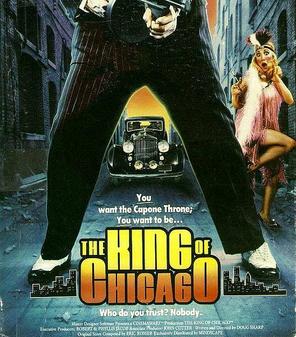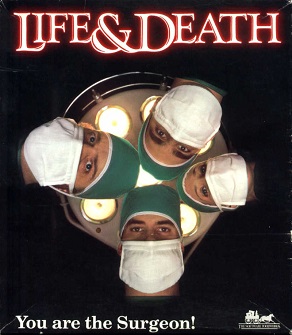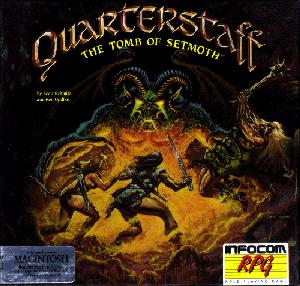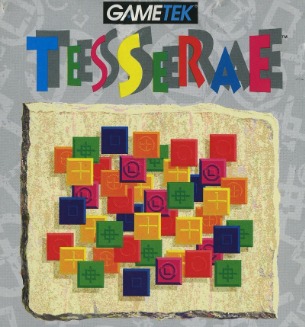
SimCity, also known as Micropolis or SimCity Classic, is a city-building simulation video game developed by Will Wright, and released for a number of platforms from 1989 to 1991. SimCity features two-dimensional graphics and an overhead perspective. The game's objective is to create a city, develop residential and industrial areas, build infrastructure, and collect taxes for further city development. Importance is placed on increasing the population's standard of living, maintaining a balance between the different sectors, and monitoring the region's environmental situations to prevent the settlement from declining and going bankrupt.

Pathways into Darkness is a first-person shooter adventure video game developed and published by Bungie in 1993, for Macintosh personal computers. Players assume the role of a Special Forces soldier who must stop a powerful, godlike being from awakening and destroying the world. Players solve puzzles and defeat enemies to unlock parts of a pyramid where the god sleeps; the game's ending changes depending on player actions.

The Fool's Errand is a 1987 computer game by Cliff Johnson. It is a meta-puzzle game with storytelling, visual puzzles, and a cryptic treasure map. It is the tale of a wandering Fool who seeks his fortune in the Land of Tarot and braves the enchantments of the High Priestess. A sequel titled The Fool and His Money was released October 25, 2012.

Dark Castle is a 1986 platform game for Macintosh published by Silicon Beach Software, later published by Three-Sixty Pacific for other platforms. It was designed and illustrated by Mark Pierce and programmed by Jonathan Gay. In Dark Castle, a young hero named Duncan tries to make his way to the evil Black Knight, dodging objects as well as solving occasional puzzles.

The King of Chicago is a 1986 action-adventure video game by Doug Sharp. Based on numerous Hollywood mobster movies, this game is set in the 1930s, but some sequences towards the end of the game take place in 1986. The Macintosh version of the game is animated using claymation, while other versions utilize drawn graphics.

3 in Three is a 1989 metapuzzle video game designed by Cliff Johnson and published by Cinemaware and Inline Design.

Wizardry: Proving Grounds of the Mad Overlord is the first game in the Wizardry series of role-playing video games. It was developed by Andrew Greenberg and Robert Woodhead. In 1980, Norman Sirotek formed Sir-Tech Software, Inc. and launched a beta version of the product at the 1980 Boston Computer Convention. The final version of the game was released in 1981.

Pipe Mania is a puzzle video game developed by The Assembly Line for the Amiga and published in 1989. It was ported to several other platforms by Lucasfilm Games as Pipe Dream; the company distributed the game in the US. The player must connect randomly appearing pieces of pipe on a grid to a given length within a limited time.

Crystal Quest is an action game written by Patrick Buckland for the Macintosh and published by Casady & Greene in 1987. It was ported to the Apple IIGS in 1989 by Rebecca Heineman. Ports were also made to the Amiga, Game Boy, iOS, and Palm. It was the first game to support the color displays of the Macintosh II.

Life & Death is a computer game published in 1988 by The Software Toolworks. The player takes the role of an abdominal surgeon. The original packaging for the game included a surgical mask and gloves. A sequel, Life & Death II: The Brain, was published in 1990. In this sequel, the player is a neurosurgeon.

Quarterstaff: The Tomb of Setmoth is an interactive fiction role-playing video game developed by Scott Schmitz and Ken Updike and released by Infocom for Macintosh in 1988. The game features a text parser, graphics, a dynamically updated map, and a graphical interface that incorporates Mac OS hierarchical menus.

Ishido: The Way of Stones is a puzzle video game released in 1990 by Accolade and developed by Publishing International. It was designed by Michael Feinberg and programmed by Ian Gilman and Michael Sandige. The game's producer was Brad Fregger, and Brodie Lockard contributed with graphics.

Welltris is a puzzle video game, developed by Doca and licensed to Bullet-Proof Software. It is an official game in the Tetris series. Adaptations were made by Sphere, Inc., for Spectrum HoloByte, and by Infogrames. It was released for MS-DOS compatible operating systems in 1989. Ports for Macintosh, Amiga, Amstrad CPC, and Atari ST followed 1990, then ZX Spectrum and Commodore 64 1991.

Star Wars: TIE Fighter is a 1994 Star Wars space flight simulator and space combat video game, a sequel in the Star Wars: X-Wing series. It places the player in the role of an Imperial starfighter pilot during events that occur between The Empire Strikes Back and Return of the Jedi.

Tesserae is a single-player video game developed by Nicholas Schlott based on Kent Brewster's DOS game Stained Glass and published by Inline Design in 1990 for the Macintosh. The game was also released for the Game Boy and Game Gear handhelds published by GameTek, developed by Eurocom.

Their Finest Hour: The Battle of Britain is a World War II combat flight simulation game by Lawrence Holland, released in October 1989 for the Amiga, Atari ST and MS-DOS systems. It was the second game in the trilogy of World War II titles by Lucasfilm Games, the others being Battlehawks 1942 (1988) and Secret Weapons of the Luftwaffe (1991). The game was released with a 192-page manual written by Victor Cross, that provided a detailed historical overview of the battle and pilots' perspectives. An expansion pack, Their Finest Missions: Volume One, was released in 1989.

WingNuts: Temporal Navigator is a 2001 top-down multi-directional shooter for Macintosh made by Freeverse Software. It was inspired by arcade games Time Pilot and 1942.

Jack Nicklaus' Greatest 18 Holes of Major Championship Golf is a golf-simulation video game developed by Sculptured Software, and published by Accolade beginning in 1988. It was released for Amiga, Amstrad CPC, Apple IIGS, Atari ST, Commodore 64 (C64), MS-DOS, Macintosh, MSX, Nintendo Entertainment System (NES), PC-88, and Sharp X68000.

Where in Time Is Carmen Sandiego? is a multiplatform video game where players have to travel through time to collect clues and the warrants necessary to capture Carmen Sandiego or her henchmen. The goal of this game is to track Carmen's villains through history and arrest them and ultimately arrest Carmen herself.

Deliverance is a platform game developed and published by 21st Century Entertainment in 1992 for the Amiga and Atari ST, and in 1993 for Macintosh. It is a remake of the 1990 Hewson Consultants game Deliverance: Stormlord II, featuring new graphics and sound as well as a changed gameplay system and a different plot. A version for the Sega Genesis was planned but never released.




















